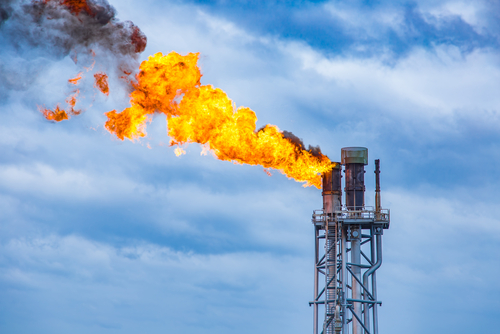Flare Compliance at Oil Refineries

Flare Compliance at Oil Refineries
The EPA Refinery Sector Rule (RSR) update, effective January 30, 2019, requires refineries to monitor flare gas composition more closely. The MAX300-AIR gas analyzer provides rapid, detailed analysis of vent gases to help refineries meet these new compliance standards. Flares used for Air Pollution Control Devices (APCD) must achieve 98% Hazardous Air Pollutant (HAP) destruction efficiency. The updated rule also includes monitoring of parameters like pilot flame, visible emissions, and net heating values (NHV).
The Net Heating Value of the gas in the Combustion Zone (NHVCZ) directly affects combustion efficiency, with a required NHVCZ ≥ 270 Btu/scf for at least 15 minutes. For flares with assist air, NHVdil must meet a specific threshold. Continuous, direct measurements are needed to meet these requirements. The MAX300-RTG 2.0 real-time gas analyzer, used in many US refineries, provides continuous updates of NHV, H2S, and Total Sulfur, helping refineries stay compliant and improve operational control.

The regulation offers multiple ways to calculate the Net Heating Value of the gas in the Combustion Zone (NHVCZ) for RSR reporting, but all methods rely on the Net Heating Value of the Vent Gas (NHVVG) as a key input. Parameters such as NHVCZ, NHVdil, and maximum flare tip velocity (Vmax) depend on NHVVG, making it crucial for both compliance and effective flare control. Direct measurements of vent gas composition allow accurate calculation of NHVVG, and precise gas analysis ensures reliable data. When regulated material is sent to the flare, NHVVG fluctuates as hydrogen and hydrocarbon concentrations rise and fall. The MAX300-RTG analyzer provides consistent, high-precision NHV measurements, ensuring reliable data despite variations in the gas composition.